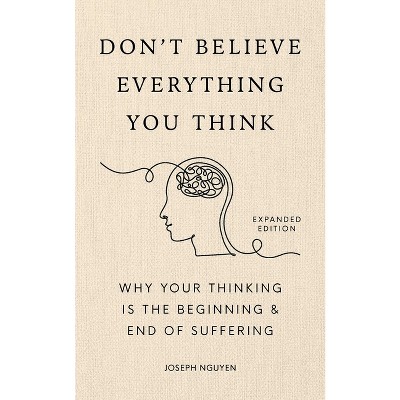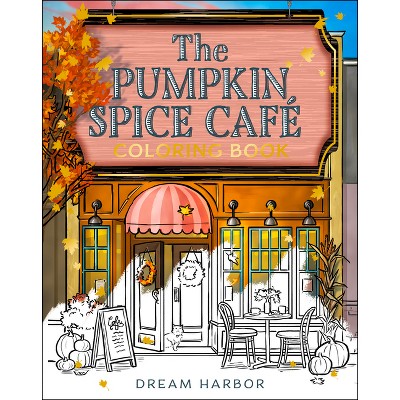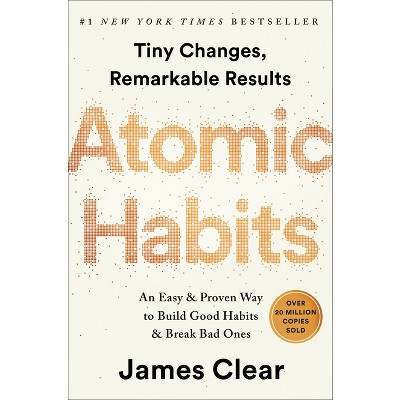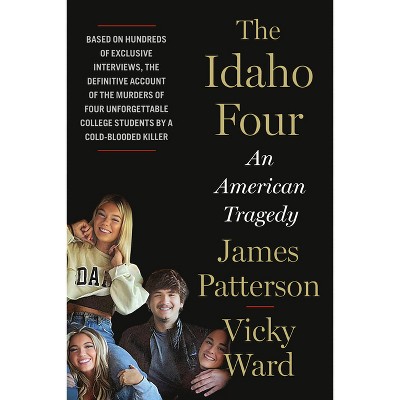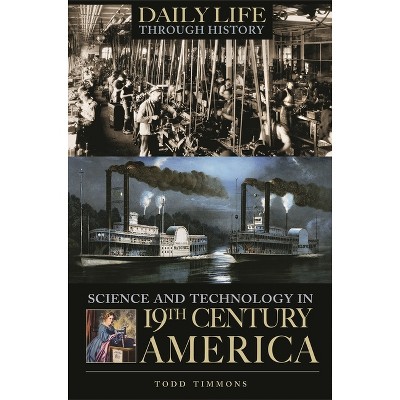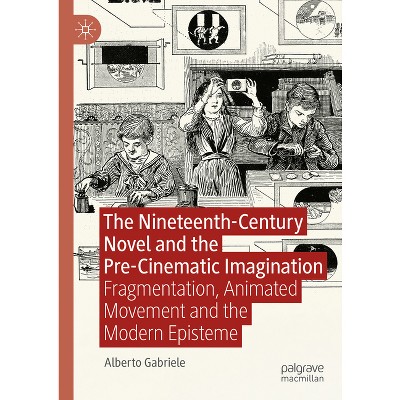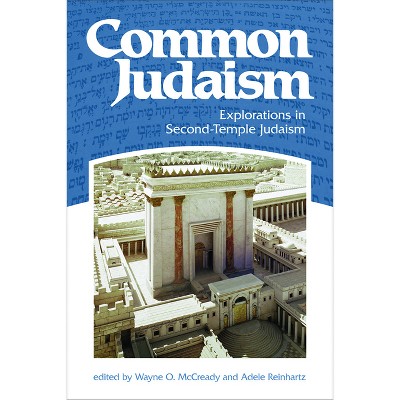Women's Roles in Nineteenth-Century America - by Tiffany K Wayne (Hardcover)

About this item
Highlights
- The nineteenth century has been referred to as the Woman's Century, and it was a period of amazing change and progress for American women.
- About the Author: Tiffany K. Wayne, a former Affiliated Scholar of the Institute for Research on Women and Gender at Stanford University, teaches U.S. history and American women's history at Cabrillo College in Aptos, California.
- 248 Pages
- History, United States
Description
About the Book
The nineteenth century has been referred to as the Woman's Century, and it was a period of amazing change and progress for American women. There were great leaps forward in women's legal status, their entrance into higher education and the professions, and their roles in public life. In addition, approximately two million African American female slaves gained their freedom. Women's Roles in Nineteenth-Century America examines how economic, political, and social factors in the United States affected women's roles and how women themselves helped shape history. Each thematic chapter addresses ideas about women's proper roles as well as women's experiences of living in the nineteenth century. While the dominant ideas about appropriate gender roles originated from within the white Protestant and primarily middle-class culture, each chapter compares those ideas with the reality of different women's daily lives, integrating information on European American, African American, Native American, and immigrant women, and women of different socioeconomic and religious backgrounds and regions. Students and general readers will come away with a solid understanding of marriage and family life, the boundaries between home and public life, work, the intricacies of social and political reform, and new directions in religious and literary roles and the multicultural histories of the American West.
Chapter 1, Marriage and Family Life, looks at women's roles and relationships as daughters, wives, and mothers, as well as the roles of women who remained single, either by choice or circumstance. Slave marriages and interracial marriages are also discussed, as well as reformers' attacks on and attempts to provide alternatives to traditional marriage. Chapter 2 on Work acknowledges women's unpaid work within the household economy as well as their entrance into the paid workforce beginning in the nineteenth century. Chapter 3, Religion, explores women's roles in as churchgoers, reformers, missionaries, and preachers. Chapter 4 on Education examines a century that began with almost no women having access to formal education-and most black women denied any education all-and ended with women making up nearly half of all college graduates and in leading roles as teachers, college administrators, and even college presidents. Women had also made several first entrances into professions requiring advanced educations, such as medicine, the law, and the ministry. Chapter 5, Politics and Reform, explains how women were consistently active in public life throughout the century. Chapter 6, Slavery and Civil War, looks at the experience of enslaved women, their survival and resistance, as well as their first experiences of freedom during and after the Civil War. The chapter also explores the ways in which both black and white women participated in and were affected by the Civil War. Chapter 7 on The West discusses the process of relentless westward movement in the nineteenth century through the perspective of women, whether the thousands of pioneer women who traveled into and settled the west, or the native women who were confronted with and challenged by those settlements. Finally, Chapter 8, Literature and the Arts, shows that while traditional studies of high culture have focused largely on a male canon of writers and artists, women in fact contributed to establishing an American tradition of literature and the arts.
Book Synopsis
The nineteenth century has been referred to as the Woman's Century, and it was a period of amazing change and progress for American women. There were great leaps forward in women's legal status, their entrance into higher education and the professions, and their roles in public life. In addition, approximately two million African American female slaves gained their freedom. Women's Roles in Nineteenth-Century America examines how economic, political, and social factors in the United States affected women's roles and how women themselves helped shape history. Each thematic chapter addresses ideas about women's proper roles as well as women's experiences of living in the nineteenth century. While the dominant ideas about appropriate gender roles originated from within the white Protestant and primarily middle-class culture, each chapter compares those ideas with the reality of different women's daily lives, integrating information on European American, African American, Native American, and immigrant women, and women of different socioeconomic and religious backgrounds and regions. Students and general readers will come away with a solid understanding of marriage and family life, the boundaries between home and public life, work, the intricacies of social and political reform, and new directions in religious and literary roles and the multicultural histories of the American West.
Chapter 1, Marriage and Family Life, looks at women's roles and relationships as daughters, wives, and mothers, as well as the roles of women who remained single, either by choice or circumstance. Slave marriages and interracial marriages are also discussed, as well as reformers' attacks on and attempts to provide alternatives to traditional marriage. Chapter 2 on Work acknowledges women's unpaid work within the household economy as well as their entrance into the paid workforce beginning in the nineteenth century. Chapter 3, Religion, explores women's roles in as churchgoers, reformers, missionaries, and preachers. Chapter 4 on Education examines a century that began with almost no women having access to formal education-and most black women denied any education all-and ended with women making up nearly half of all college graduates and in leading roles as teachers, college administrators, and even college presidents. Women had also made several first entrances into professions requiring advanced educations, such as medicine, the law, and the ministry. Chapter 5, Politics and Reform, explains how women were consistently active in public life throughout the century. Chapter 6, Slavery and Civil War, looks at the experience of enslaved women, their survival and resistance, as well as their first experiences of freedom during and after the Civil War. The chapter also explores the ways in which both black and white women participated in and were affected by the Civil War. Chapter 7 on The West discusses the process of relentless westward movement in the nineteenth century through the perspective of women, whether the thousands of pioneer women who traveled into and settled the west, or the native women who were confronted with and challenged by those settlements. Finally, Chapter 8, Literature and the Arts, shows that while traditional studies of high culture have focused largely on a male canon of writers and artists, women in fact contributed to establishing an American tradition of literature and the arts.Review Quotes
"[W]ayne....[s]ucceeds admirably in fulfilling the series' purpose. This thematic overview of women's history in nineteenth-century America is an engaging, quick-moving read....It does not read like a textbook, but rather as a user-friendly work of synthetic scholarship which provides both a structured overview and a current and top-notch set of reading lists for students interested in women's history....[b]y integrating the true variety of American women's experiences in her narrative, Wayne captures the period in a way monographs often cannot....[a]n excellent overview of women's history for high-school students, complete and up-to-date with sophisticated, clear writing that does not condescend or oversimplify....engaging, and well-executed overview in a slim volume. It is an excellent resource for libraries and classrooms." --H-Net
"In a series highlighting women's roles in major areas of the world, Wayne traces the 19th century in the US as one of great progress for women. Still, as the timeline shows, it wasn't until 1920 that the Constitution was amended to grant women the right to vote. The many images include an illustration from an antislavery book; photographs of Little Women author Louisa May Alcott, early feminist theorist Margaret Fuller, and Indian reformer Sarah Winnemucca; and a Mary Cassatt painting for the Woman's Building at the 1983 World's Columbian Exposition. Chapters include suggested reading." --Reference & Research Book NewsAbout the Author
Tiffany K. Wayne, a former Affiliated Scholar of the Institute for Research on Women and Gender at Stanford University, teaches U.S. history and American women's history at Cabrillo College in Aptos, California. She is the author of Woman Thinking: Feminism and Transcendentalism in 19th-Century America (2005) and Encyclopedia of Transcendentalism (2006).
